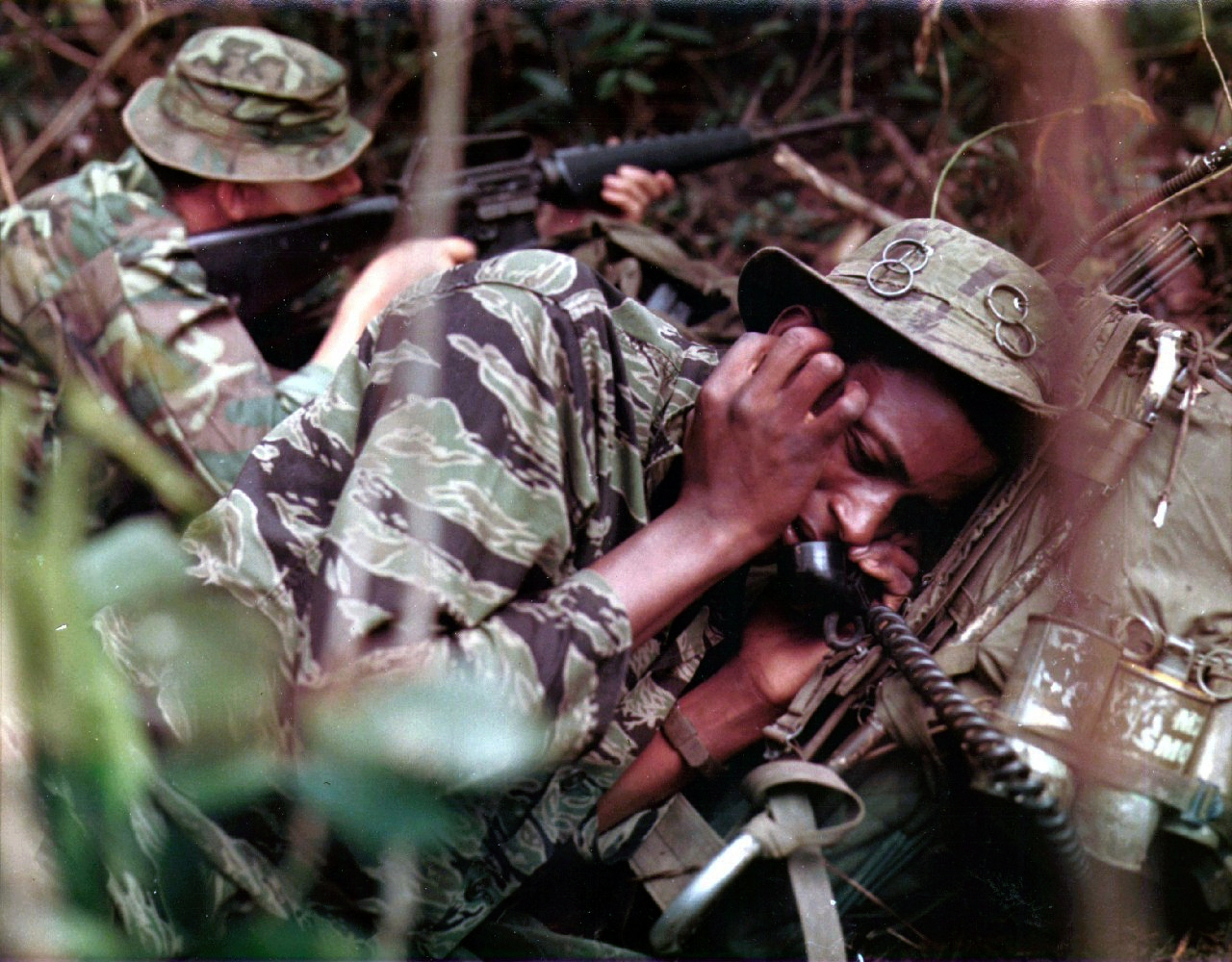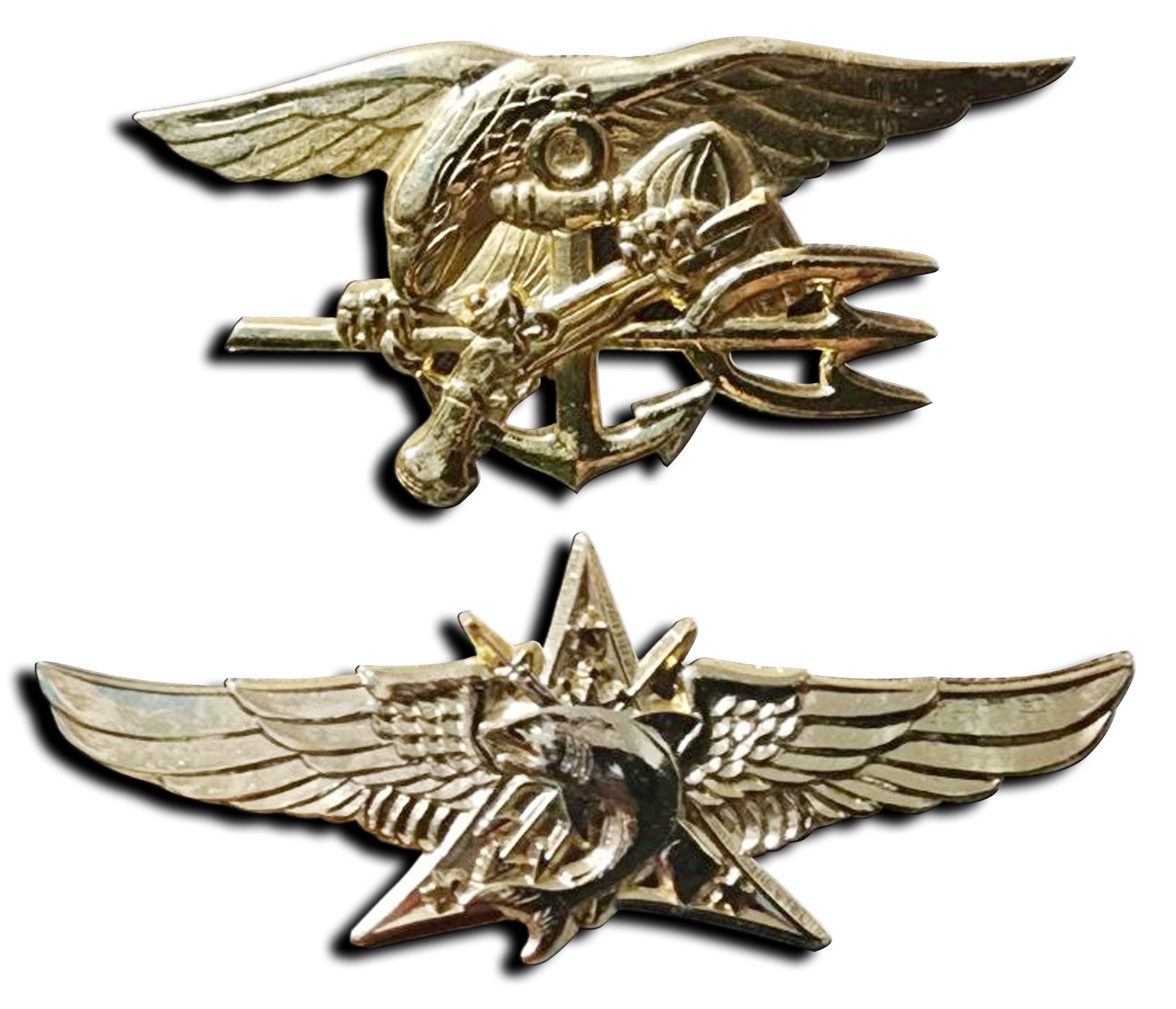|
Tiger Stripe Camouflage
Tiger stripe is the name of a group of camouflage patterns developed for close-range use in dense jungle during jungle warfare by the South Vietnamese Armed Forces and adopted in late 1962 to early 1963 by US Special Forces during the Vietnam War. During and after the Vietnam War, the pattern was adopted by several other Asian countries. It derives its name from its resemblance to a tiger's stripes. It features narrow stripes that look like brush-strokes of green and brown, and broader brush-strokes of black printed over a lighter shade of olive or khaki. The brush-strokes interlock rather than overlap, as in French Lizard pattern (TAP47) from which it apparently derives. History It is unclear who developed the first tiger stripe pattern, consisting of 64 stripes. The French used a similar pattern called "lizard" in the First Indochina War. After the French left Vietnam, the Republic of Vietnam Marine Division began using a derived pattern which differed in having interlockin ... [...More Info...] [...Related Items...] OR: [Wikipedia] [Google] [Baidu] |
South Vietnam
South Vietnam, officially the Republic of Vietnam (RVN; , VNCH), was a country in Southeast Asia that existed from 1955 to 1975. It first garnered Diplomatic recognition, international recognition in 1949 as the State of Vietnam within the French Union, with its capital at Saigon, before becoming a republic in 1955, when the southern half of Vietnam was a member of the Western Bloc during part of the Cold War after the 1954 Geneva Conference, 1954 division of Vietnam. South Vietnam was bordered by North Vietnam (Democratic Republic of Vietnam) to the north, Kingdom of Laos, Laos to the northwest, Khmer Republic, Cambodia to the southwest, and Thailand across the Gulf of Thailand to the southwest. Its sovereignty was recognized by the United States and 87 other nations, though it failed to gain admission into the United Nations as a result of a Soviet Union, Soviet veto in 1957. It was succeeded by the Provisional Revolutionary Government of the Republic of South Vietnam, Rep ... [...More Info...] [...Related Items...] OR: [Wikipedia] [Google] [Baidu] |
Army Of The Republic Of Vietnam Special Forces
The Army of the Republic of Vietnam Special Forces ( — LLDB) were the elite military units of the Army of the Republic of Vietnam (ARVN). Following the establishment of the Republic of Vietnam (commonly known as South Vietnam) in October 1955, the Special Forces were formed at Nha Trang in February 1956. During the rule of Ngô Đình Diệm, the Special Forces were run by his brother, Ngô Đình Nhu, until both were assassinated in November 1963 in a coup. The Special Forces were disbanded in 1975 when South Vietnam ceased to exist after the Fall of Saigon. Early years The Special Forces came into being at Nha Trang in February 1956 under the designation of the First Observation Battalion/Group (FOG). By 1960, most Special Forces units were involved in the FOG program. At Long Thành, they were trained in intelligence gathering, sabotage and psychological operations (PSYOP). The main duties of the Special Forces entailed the recruitment and training of one-to-four man ... [...More Info...] [...Related Items...] OR: [Wikipedia] [Google] [Baidu] |
NAVSOG At The SEACAT 2018 Exercise 002
The Naval Special Operations Command (NAVSOCOM) is a separate command of the Philippine Navy trained in special operations, sabotage, psychological and unconventional warfare and is heavily influenced by the United States Navy SEALs. NAVSOCOM is headquartered at Naval Base Heracleo Alano Sangley Point, Cavite City. It has eleven units located across the Philippines, from Naval Operating Base San Vicente at Santa Ana, Cagayan in the north to Naval Station Zamboanga in the south. The unit's tasks were also expanded to cover all facets of unconventional warfare in a maritime and riverine environment. This includes but is not limited to demolition, hostage rescue, harassment, force protection and maritime tactical operations. History The predecessor unit to the NAVSOCOM, the Underwater Operations Team or UOT was activated on 5 November 1956 as a special operations unit of the Philippine Navy. Patterned after the US Navy Underwater Demolition Teams and the Italian Decima Flottiglia ... [...More Info...] [...Related Items...] OR: [Wikipedia] [Google] [Baidu] |
ERDL
The Engineer Research and Development Laboratory (ERDL) was a United States Army United States Army Corps of Engineers, Corps of Engineers research facility located at Fort Belvoir, Virginia. The ERDL performed research and development related to earthmoving, industrial Engine, engines and Turbine, turbines, Fuel, fuels handling, environmental control, electric power and Electric propulsion, propulsion, direct energy sources, detectors, Bridge, bridges and Boat, marine craft, Naval mine, mine warfare, Fortification, fortifications and Area denial weapon, obstacles, Military camouflage, camouflage and Military deception, deception, water purification, Nuclear weapon effects, nuclear weapons effects, Materials science, materials, and environmental testing. It also prepared Military acquisition, procurement data, packages including development of specifications of materiel procured in quantity; engineering studies and tests to determine performance and quality assurance data for S ... [...More Info...] [...Related Items...] OR: [Wikipedia] [Google] [Baidu] |



